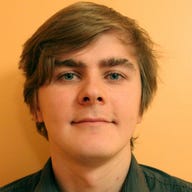4G beauty contest shoots Estonia to the top of Europe's LTE leaderboard

Earlier this month, Estonia's largest mobile operator, EMT, announced that it had covered 95 percent of the country with its 4G LTE network.
According to EMT chief executive Valdo Kalm, Estonia is the first country in Europe, and the third in the world, to reach the milestone.
"Sweden and Denmark are the countries competing for the second and third place in Europe with about 50 percent of their territory covered with 4G LTE," he said, adding that globally only Estonia, Singapore and South Korea have passed the 95 percent mark.
EMT — which is owned by TeliaSonera, the Swedish telecommunications company that launched the world's first commercial 4G network in 2009 — opened Estonia's first 4G network in February 2010, when it was the 11th such network globally at the time.
The second operator to come to the local 4G market was Tele2, the country's third-largest operator, which launched its network in November 2012. It was followed some months later by second-largest operator Elisa, which launched its LTE network in February this year.
Spectrum beauty contest
So far, Estonian mobile operators have only used 1800MHz and 2600MHz frequency bands for LTE.
While higher frequencies provide better results in urban and densely-populated areas, the 800MHz frequency band — which just a few years ago was used for analogue TV in Estonia — is more suitable for covering larger areas and also offers better indoor connections.
EMT said at the beginning of 2013 that its plan to cover 95 percent of Estonia would take until the end of the year to complete, but the long-awaited distribution of the country's 800MHz 4G licences has managed to help speed up the rollout.
Estonia's Technical Surveillance Authority (TSA) announced at the end of May that EMT had won the first of three lots of 800MHz licences, with the operator promising to start providing services using the spectrum band no later than 16 June.
The other operators which had hoped to win the licence, Elisa and Tele2, had offered to put the spectrum to work on 26 July and 20 December respectively.
As the winner of so-called "beauty contest", EMT was obliged to install 199 base stations all over Estonia and cover at least 95 percent of Estonian territory outside of the cities with 4G services, as well as providing users with download speeds of at least 5Mbps.
On the morning of 17 June, the company reported to the TSA that it had covered 95.1 percent of the territory with its LTE network and it had installed over 200 new base stations.
Network build-out
According to the head of EMT's partner Ericsson's local branch, Seth Lackman, although the building of the base stations had already begun before the results of the beauty contest were announced, the tempo was still very fast.
"I think we set a record — one day we installed 25 transmitters and over 100 within a week," he said, adding that specialists from Finland and Latvia were among the 25 teams that were building the network. The network equipment used in the stations was actually built in the Swedish telecommunication equipment giant's local factory, he added.
"We brought an Estonian product quickly to the Estonian market," he said.
Competition in the Estonian mobile market fierce, and not all of the operators agreed that EMT had hit the coverage milestones it promised to in time.
Elisa said that, according to the measurements carried out by local company Pemetel on the day following the deadline, EMT had less than 80 percent of Estonian territory covered with 4G LTE. EMT denied the accusations — and was later proved correct by measurements taken by the TSA.
Although EMT's CEO believes rapid growth in the number of 4G users in Estonia will come in the near future, he says the increased number of users will not affect the connection speed for EMT customers.
"The new bases stations are backed up by the fibre optic network, so we can just 'turn the tap on' if the network is becoming overloaded. We are not worried about this problem," he said.
There are still three companies involved in the competition for the second and the third 800MHz licence. Mobile operators Elisa and Tele2 are aiming to take the second licence and, in the fight for the third license, they have an additional rival in the form of local telecommunications company Starman. If Starman succeeds in gaining the licence, it will put the spectrum to use for its wireless digital television and internet service called Zuum.
While EMT had to pay the government €1m as a one-off licence fee for the first licence, the other two licences are likely to prove more expensive — the winners have to pay €1.6m. The yearly fee for using the frequency band is the same for all of the three future licence holders — €24,150.
Because the regulations say there must be a period of at least 30 days between the results of all three competitions being announced, the results of the second competition will be published in the beginning of July and the winner of the last license will be announced by mid-August, according to the TSA.